Our 24 favourite games of 2023
As voted for by the RPS Treehouse
19. The Talos Principle 2

Katharine: There are games that make you think, and games that make you really think. The Talos Principle 2 is one of the latter, chucking head-scratching, first-person puzzle arenas at you while also stuffing extra philosophical questions and conundrums into every nook and cranny. You know, just in case the puzzles weren't enough to give your brain cells a good work out already. The first game was much the same in this respect, but The Talos Principle 2 is an even glossier, more fully realised version of it. This isn't a puzzle game grafted onto some leftover Serious Sam assets anymore. This is a full-blown concrete world with giant megastructures to explore, and you've got a whole civilization of robot pals to help you navigate it. It's fab, and one of my favourite games this year.
You play as 1K, the one thousandth robot to be 'born' into the all-machine future society of New Jerusalem. Your birth marks the completion of New Jerusalem's entire purpose in life - to bring 1000 new robots into the world - so naturally, a lot of its residents are wondering, "Well, what now?" A reasonable question, given the circumstances, especially when a quantum projection of Greek god Prometheus suddenly turns up to both ruin your birthday party and deliver an ominous message about the future. Your fellow robot friends quickly trace the origin of this projection to a mysterious Toblerone-shaped mega pyramid on a nearby island, which also just so happens to be possibly the last known location of New Jerusalem's missing founder, Athena.
So begins your search for answers, both regarding the relationship between Athena, Prometheus and some other nosy Greek god projections that make an appearance, and of course how to get into this enormous Toblerone in the first place. To do this, you'll need to travel to the island's four cardinal points and solve lots of strange puzzle chambers in each location. These in turn will grant you access to that area's respective megastructure, all so you can turn on a big laser and fire it at one of the Toblerone's entry gates. It's a slightly silly premise when you lay it all out like that, admittedly, but the fact it all seems so plausible in the moment is a testament to both The Talos Principle 2's strong sense of place and the confidence with which it establishes its world and setting in its wider story.
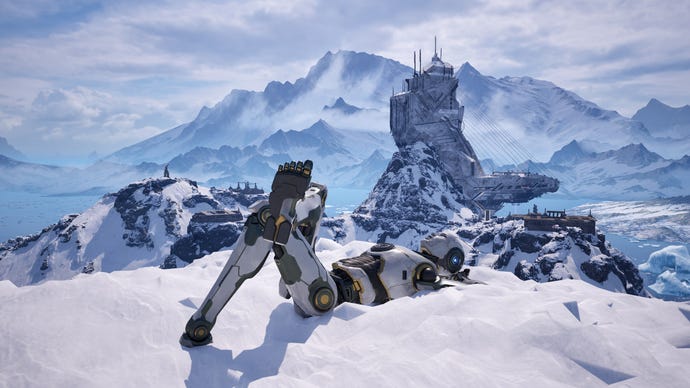
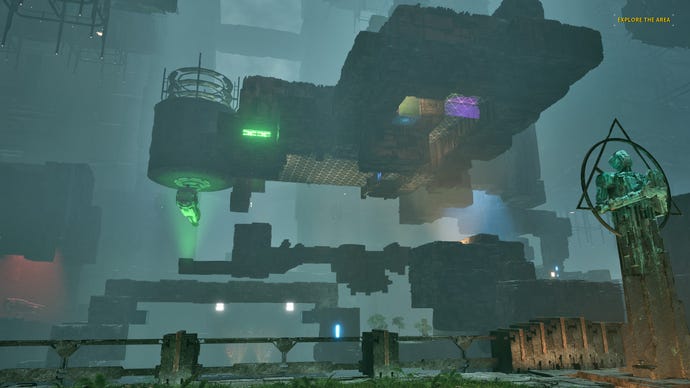
It helps that your accompanying robot explorers are such good fun to hang around with. Sure, they're utterly useless when it comes to helping you solve any of the actual puzzles, but hearing their spiky personalities chattering away over radio comms does help bring a welcome sense of life and vitality to this otherwise quite lonesome journey. The puzzles themselves are also top notch, delivering constant twists and surprises on well-worn concepts such as light beam puzzles, pressure pads and colour-coded door switches to great effect. Every new location has its own particular gimmick to get to grips with, but it's how The Talos Principle 2 then layers them all on top of one another in later levels that really make it sing. And sandwiched in the middle of all this is a very hearty dollop of existential pondering, with your robot friends constantly debating such things as 'What is the price of progress?' and 'Are we forever doomed to repeat the mistakes of our human creators as we strive to nurture this fragile new society into a humanless future?'
It's a real good egg, is what I'm saying, and gives you plenty to chew over as you tackle its clever puzzles. It also has an excellent photo mode with three poses dedicated entirely to 1K having a good time with a cat, so really, what's not to like? You don't worry if you haven't played the first game, either, as this can be enjoyed perfectly well as a standalone experience. So go forth, enjoy and impress your friends and family with your newfound intellectualism round the Christmas dinner table. You won't regret it.
18. Ratchet & Clank: Rift Apart
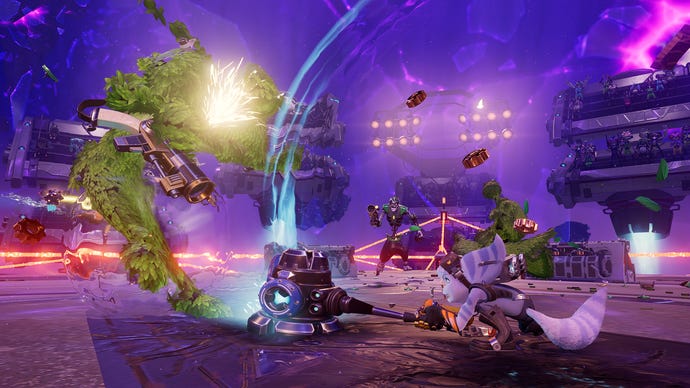
James: I’m absolutely down with the whole C.S. Lewis, put-away-fear-of-childishness thing, but it’s also nice when something childish seems to grow up alongside you. Thus we have Ratchet & Clank: Rift Apart – whose origins trace back to a 2002 PS2 game with an arse crack joke in the first 30 minutes – rocking up on PC with not just with prettier visuals and more electric shooting, but with honest-to-goodness themes and character work. A mascot platformer with something to say? Blimey.
Not like this is The Last Of Clank or anything. Rift Apart is still funny, and silly, and has weapons that turn bad guys into topiary or shoot burrowing rocket-drills that bark like dogs. But it also delves into the thoughts and fears of its leading cast in a way that Ratchet games seldom bother with, successfully planting a more compelling impetus behind its planet-hopping than just trying new flavours of sci-fi battlefield. It’s fitting, too, that the most common thread between these characters is a resistance to change. Perhaps that’s something that developers Insomniac may have felt back when this was an annual series, and have – given Rift Apart’s more mature tone, new protagonists, and more freely roamable planets – since overcome.
Happily, it’s still a corker of a shooter, always eager to fill your screen with oversized plasma blasts, shattered scenery, and detonating cyborg battlesuits. I don’t actually think the wacky gun arsenal is Insomniac’s best, but all of them are satisfying to deploy, and their niches are sufficiently focused to encourage regular switching during big fights. I love the emphasis on mobility, as well. Between the heavily advertised rift-jumping and a more bread-and-butter dash move, nimbleness has never been more vital or rewarding.

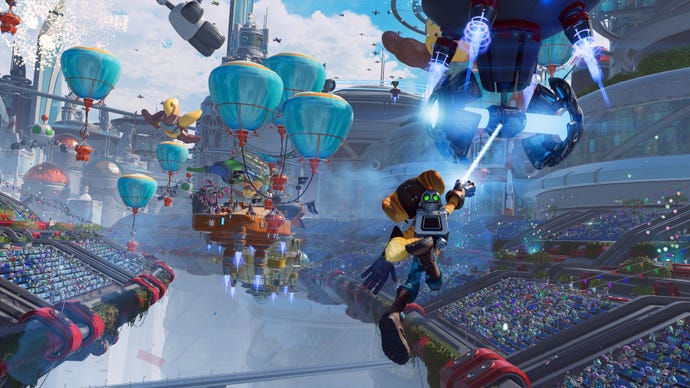
You may well be solely of the PC mind, in which case I appreciate that all these comparisons to years-old PlayStation games may be lacking in meaning. But even then, it’s good news: the first Ratchet & Clank game with a proper Windows port is probably the best one in the entire series. Well played, old friend.
Alice Bee: Nostalgia got me in a choke hold with this one. The original Ratchet & Clank came out when I was 12 and me and my younger brother absolutely rinsed it on the PS2. Imagine my delight when the opening level of Rift Apart is a parade that recreates key moments from that game? You can't. My delight was too great. Rift apart has so many old favourite characters showing up again, it's like your year 8 birthday party except people actually came this time. And they had lasers! But James is correct that Rift Apart has a more mature tone, so ven if you have never picked up a Ratchet & Clank game before, Rift Apart is a rip-roarin' good time. It's the kind of sci-fi bullshit you'd get in a Marvel Disney+ TV show, but better at both the sci-fi and the bullshit, and the charm.
17. Heretic's Fork

Alice0: Time to log into your PC for another shift at your lousy job: stopping sinners from escaping Hell by building and upgrading defences. Ugh! As a tower defence game, Heretic's Fork is a simple one. You can't build mazes, you can't even pick spots to place towers, you can only build and upgrade parts in the limited slots on your central tower, which sits at the centre of the escape portal. Some towers are just types of gun, some swing spiked balls, some summon different units to independently run around and attack, and... that's about it for towers. What you're really building is your deck.
All structures, upgrades, and abilities are represented by cards. If you want to build or upgrade that flame tower, you'll need to draft one as a reward, buy it from a store, or craft it using auto-battler rules (combine cards of the same tier to create a card from the next tier up). If you want to boost your overall damage stats, yup, you'll need those cards. Same goes for active abilities doing things like throwing holy lightning bolts, dropping hellfire grenades, shielding, and healing. And if you want dropped coins to turn into bombs. Or to improve your crafting options. Or recover spent cards. Or... you could build into many different directions even if you used the exact same towers.
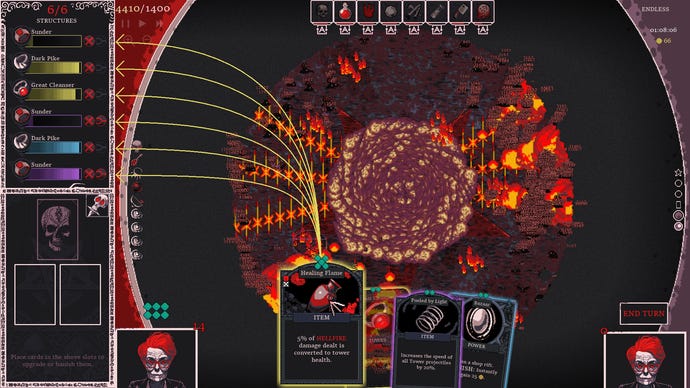
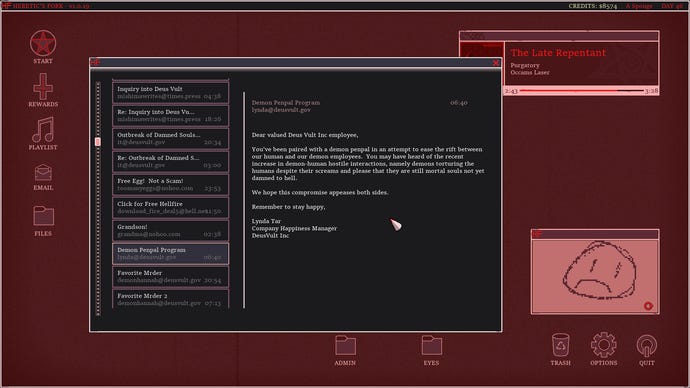
When I first wrote about Heretic's Fork, soon after it launched, this wasn't the case. Tired of needing to focus on particular paths if I wanted to win, I thought I had played enough and was about down with it. Then the updates started, and I haven't stopped. Tweaks and new cards have made it viable to mix different elements and structure types. Other new cards have added exciting new opportunities and combos. And new difficulty tiers to climb. And new characters. And a Christmas update is still to come.
Fun little fake desktop environment, too. Nice little paperclip pal. Funny and silly and grim little stories of corporate Hell flowing through your inbox. Love a fake desktop.
16. Honkai: Star Rail

Ollie: When I first started playing Honkai: Star Rail, it was more for work than play. As a guides writer, you can't just ignore the next big HoYo game. You gotta grit your teeth and dive into their unintuitive, jargon-filled worlds, replete with rewards screens, daily challenges, and impossibly gorgeous character costume designs. I fully expected to bounce off Honkai the moment I'd completed the bare minimum amount of work required. Months later, I'm still playing. Honkai: Star Rail has slowly turned into an extremely cosy time-killing safe space for me, filled with satisfying daily routines, lively characters, great combat, great music, and some surprisingly rich storytelling.
Unlike Genshin Impact's open-world roaming and real-time fantasy combat, Honkai: Star Rail brings you a space opera of galactic breadth, split into small interconnected environments and flashy turn-based battles. And boy, are they flashy. Your party consists of four characters, each of which has a regular attack, a skill attack, and an ultimate attack that you can unleash once your character has built up enough energy. Every single character attack in the game is accompanied by a splendid mini-cutscene which condenses all that HoYo flair and polish down into bite-sized moments of brilliance. I'll never tire of Himeko sipping her tea in the foreground while a nuclear explosion decimates her enemies behind her. Nor of Gepard erecting a gigantic crystalline shield wall of ice to protect his allies. The game is pure eyecandy, barraging you with flamboyance and pageantry at every opportunity - and it works. It's all sublime.

The other thing that's kept me playing it the stunning amount of content. My jaw almost dropped to the floor when I realised several hours into my playthrough that, nestled inside an unassusming room and unlocked by a certain side quest, there's a gateway to an entire separate roguelite game mode, which alone has enough content to justify being its own standalone game release. There are other similar game modes dotted about the various worlds and levels of Honkai: Star Rail too, including a management sim mode where you're in charge of a museum and must assign characters to give yours, recover new artifacts, and so on. And that aside, you've also got the gargantuan main mode, filled with dozens of main missions and side missions and companion missions and daily missions... It's all really impressive.
Honkai: Star Rail brings all that over-the-top Genshin polish to a setting and a genre that grabbed me far more than Genshin's ever did. Yes, it's a gacha game, and the number of screens and rewards and bonuses and clickables can be overwhelming to new players. But it's one of the fairest models I've ever seen, and it never feels like it's truly out to trick you into spending money. I've played it since it came out, and I haven't spent a penny on it. But at this point, I feel like the game has earnt a bit of my money for showing me such a consistently good time this year.
15. Warhammer 40K: Rogue Trader

Jeremy: When my wife and I made the decision to move to the UK earlier this year, we both began looking forward to spending more time with family, seeing the sights around London, and in my case... finally getting into Warhammer. (For those interested, I put Warhammer on my list of "great British culture to consume," right alongside Judge Dredd and Red Dwarf.)
Don't get me wrong - I've always known bits and pieces regarding Warhammer, since I dabble heavily in the tabletop RPG space and wargaming is only a few steps down the hall. But while I've got PDFs of Warhammer Fantasy Roleplay and Wrath & Glory on my computer, I've never run them. Nor have I had the chance to fully embrace the fanaticism that comes with painting a bunch of overpriced space marines or delving into the billions of Black Library books that seem to encapsulate every genre under the sun. Honestly, if we're to break things down even further, I'm more drawn to The Old World and all of its mohawk dwarves instead of the solarscapes of space facism that you get with 40k. But there's no denying that for better or for worse, Warhammer's futuristic variant is clearly the more popular side of Games Workshop's plastic crack empire - and sometimes all it takes to alter one's biases is a good CRPG.
Owlcat's Rogue Trader does just that. I'm still in the early hours, since the final version of the game just became playable only a few days ago. But as Edwin said in our impressed review-in-progress, this is an RPG that feels genuinely epic, from the choral echoes accompanying its title screen to the fact that all of my noble's abilities revolve around buffing, ordering, and occasionally sacrificing all of the other meat shields on the battlefield that solely exist to keep her out of harm's way. (It's always easy to choose your origin in a game like this when your skills boast stellar names like "You. Serve. Me.")
Rogue Trader - which technically bears the subtitle of the very first edition of the 40k wargame - also serves as a great crashcourse in all of the nuances of a galaxy ruled by grimdark, and even though modern Warhammer's moved far from the Thatcher-era satire that birthed it, there's still something innately amusing to me about a setting where everyone's obsessed with colonising in the name of the Imperium. And I do love how rolling up your character exposes you to an alignment chart divided up into the elegant extremes of "DOGMATIC," "HERETICAL," and "ICONOCLAST."

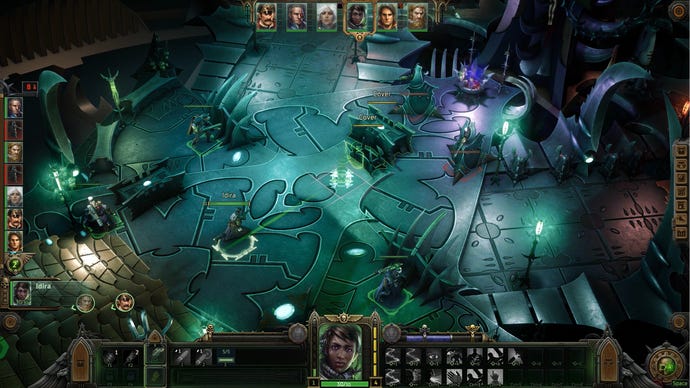
I'd also like to note that Owlcat keeps getting better with every gargantuan 150 hour CRPG that they push out. I played Pathfinder: Kingmaker for a stunning two years on and off (despite the fact that the game was buggy as heck and clearly designed by min/maxers), and I'm still playing Pathfinder: Wrath Of The Righteous, which cleaned Owlcat's penchant for jankiness up significantly. The level of polish present in Warhammer 40,000: Rogue Trader continues this ascent to the top, and while I'm still too low level to determine if Owlcat's love for min/maxing has continued with a new system, at the very least the amount of game-breaking combat loops here is less than what came before. Speaking of combat, it's a joy to finally experience a true turn-based system in an Owlcat game. The Kingmaker mod that became an actual turn-based mode in Wrath of the Righteous was fine, but those games were full of trash mobs and clearly not designed for tabletop combat. Rogue Trader is, and the combat is good - thank you very much, God-Emperor!
I've never played the 2009 Rogue Trader tabletop RPG that powers Owlcat's game, and it's far more likely that I'll finally crack open those Wrath & Glory PDFs before I do. But just as Kingmaker gave me the chance to really get down and dirty with the Pathfinder 1e ruleset, Rogue Trader delivers with the joy of indoctrinating me not only in an out-of-print tabletop system by Fantasy Flight, but to the Warhammer universe in general. I look forward to playing more and seeing how far into heresy my character falls. Oh, and if I know how my mind works, there's a high probability that I'll be painting my own legions of space marines come the new year. Hurrah for embracing high culture.








